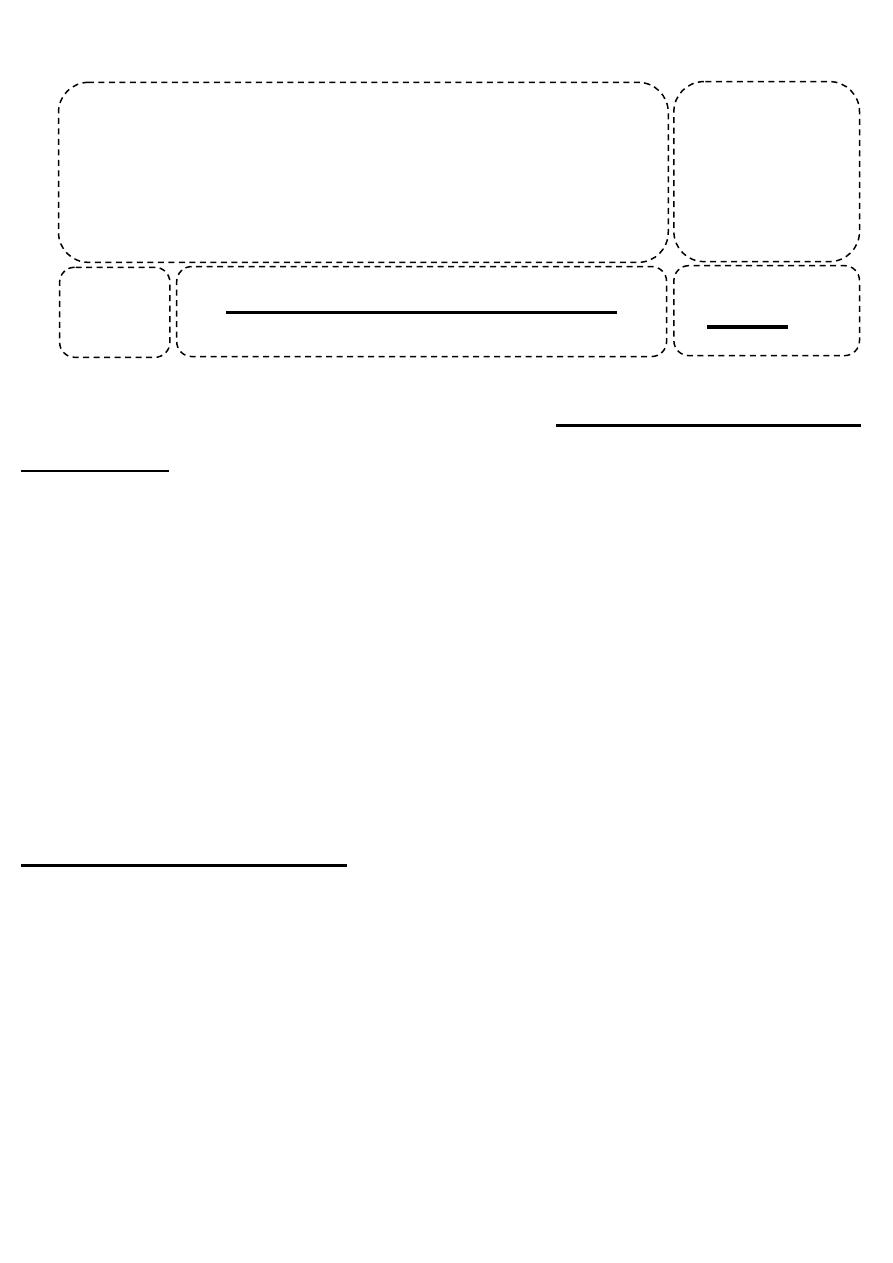
1
Dr Nesif J. Ai-Hemyary
Introduction
Substance-abuse problems cause significant disabilities for a relatively high percentage of
the population in most of world areas.
Illicit substance abuse affects multiple areas of functioning and co morbid diagnosis occurs
about 60-75% of patients with substance-related disorders.
In USA more than 15% of persons over the age of 18 are diagnosed with these disorders.
In Iraq ,there are no accurate figures about the prevalence of these disorders ,but anecdotal
reports refer to the presence of these disorders and to the increasing number of people
affected by them.
Substance induced syndromes can mimic the full range of psychiatric illnesses, including:
mood, psychotic and anxiety disorders.
In clinical practice substance use disorders must always be considered in the differential
diagnosis.
Classifications of substances
Brain altering compounds are referred to as substances in DSM-IV-TR and the related
disorders as substance-related disorders.
These disorders are characterized by changes in mood ,behavior, and cognition as a result
of continued and prolonged use of the offending drug or toxin.
There are many classes of substances that are associated with these disorders.
1- Alcohol.
2- Amphetamine and amphetamine-like substances like MDMA.
3-Cocaine.
Psychiatry
Substance related disorders
Lecture
18
نصيف .د
Al-Madena
Copy

2
4-Caffeine.
5-Hallucinogens: mescaline, pilocybin, LSD, these are cold psychodelics.
6-Inhalants: solvents like toluene, gasoline, glue and gases like nitrous oxide.
7-Nicotine.
8-0pioids.
9-Phencyclidine(PCP).
10-Sedatives, hypnotics and anxiolytics.
11-Prescribed drugs and over the counter medication (OTC): these include pain killers.
12-Anabolic-androgenic steroids: testosterone and human growth hormone (HGT).
Important concepts and terms
Dependence:
-the repeated use of a drug or chemical substance, with or without physical dependence.
Physical dependence: indicates an altered physiologic state due to repeated administration
of a drug, the cessation of which results in a specific syndrome called (withdrawal
syndrome).
Criteria for substance dependence
A maladaptive pattern of substance use, leading to clinically significant impairment or
distress, as manifested by three (or more) of the following, occurring at any time in the
same 12- month period:
1. Tolerance, as defined by either of the following:
A-a need for markedly increased amounts of the substance to achieve intoxication or
desired effect.
B-markedly diminished effect with continued use of the same amount of the substance.
2. Withdrawal, as manifested by either of the following:
A-the characteristic withdrawal syndrome for the substance.
B-the same (or closely related) substance is taken to relieve or avoid withdrawal
symptoms.
3. The substance is often taken in larger amounts or over a longer period than was intended.
4. There is a persistent desire or unsuccessful efforts to cut down or control substance use.
5-A great deal of time is spent in activities necessary to obtain the substance (e.g., visiting
multiple doctors or driving long distances) ,use the( e.g., chain smoking), or recover from
its effects.
6-Important social ,occupational, or recreational activities are given up or reduced because
of substance use.

3
7-the substance use is continued despite knowledge of having persistent or recurrent
physical or psychological problem that is likely to have been caused or exacerbated by the
substance ( e.g., current cocaine use despite recognition of cocaine- induced depression, or
continued drinking despite recognition that an ulcer was made worse by alcohol
consumption).
Abuse
Use of any drug, usually by self-administration in a manner that deviates from approved
social or medical patterns.
Criteria for substance abuse:
A- A maladaptive pattern of substance use leading to clinically significant impairment or
distress ,as manifested by one (or more ) of the following, occurring within a 12-month
period:
1. 1-recurrent substance use resulting in a failure to fulfill major role obligations at
work, school or home (e.g., repeated absences or poor work performance related to
substance use; substance related absences, suspensions, or expulsions from school;
neglect of children or household).
2. Recurrent substance use in situations in which it is physically hazardous (e.g., driving
an automobile or operating a machine when impaired by substance use).
3. Recurrent substance related legal problems( e.g., arrest for substance related disorder
conduct).
4. Continued substance use despite having persistent or recurrent social or interpersonal
problems caused or exacerbated by the effects of the substance9 e.g., arguments with
spouse about consequences of intoxication, physical fights).
B- The symptoms have never met the criteria for substance dependence for this class of
substance.
Addiction:
The repeated and increased use of a substance, the deprivation of which gives rise to
symptoms of distress and an irresistible urge to use the agent again and which leads also to
physical and mental deterioration. The term is no longer included in the official
nomenclature ,having been replaced by the term dependence.
Intoxication
:
A reversible syndrome caused by a specific substance( e.g., alcohol) that affects one or
more of the following mental functions: memory, orientation, mood ,judgment ,and
behavioral ,social ,or occupational functioning.

4
Withdrawal:
A substance specific syndrome that occurs after stopping or reducing the amount of the
drug or the substance that has been used regularly over a prolonged period of time. the
syndrome is characterized by physiologic signs and symptoms in addition to psychological
changes such as disturbance in thinking , feeling and behavior ( also called abstinence
syndrome or discontinuation syndrome.)
Tolerance
:
A phenomenon in which ,after repeated administration ,a given dose of a drug produces a
decreased effect or increasingly larger doses must be administered to obtain the effect
observed with the original dose
Etiology
A- Psychodynamic factors:
1 - According to the classical theories substance abuse is a masturbatory equivalent ,a
defense against homosexual impulses or a manifestation of oral regression. Recent
psychodynamic formulation relate substance use to depression or regard it as a reflection of
disturbed ego function.
2-childhood problems.
3-personality disorders.
4-role of family and society.
5-behavioral theories: regard it as a learned behavior.
B- Genetic factors:
A strong evidence from studies of twins ,siblings, adoptees brought up separately
indicates that the cause of alcohol abuse has a genetic component. Many less conclusive
data show that other types of substance abuse/dependence have a genetic pattern in their
development.
C- Neuro-chemical factors:
For most substances of abuse ,with the exception of alcohol ,researchers have identified
particular neurotransmitters through which, or neurotransmitter receptors on which, the
substances have their effects. The opiates for example on opiate receptors.
The major neurotransmitters possibly involved in developing substance
abuse/dependence are:opioids ,catecholamines (particularly dopamine), and Gamma
Aminobutyric Acid (GABA).
Systems of particular importance are the dopaminergic neurons in the ventral tegmental
area which project to the cortical and limbic regions especially the nucleus accumbens. This
pathway may be involved in the sensation and reward and may be the major mediator of the

5
effects of such substances like amphetamine and cocaine. the locus coerulus,the largest
group of adrenergic neurons, probably mediate the effects of the opiates.
Complications of substance abuse/dependence
1-Medical complications:
a- Intoxication.
b- Withdrawal.
c- Chronic toxic effects (liver cirrhosis, cancer, etc…).
d-Harmful effects due to the method of use: iv administration and shared needles lead to
transmission of dangerous diseases like HIV/AIDS ,hepatitis, etc…,in smoking inhalation
may cause bronchogenic cancer.
e- Indirect effects: neglect of hygiene ,exercise and poor nutrition.
Psychological complications:
a- Personality disorders.
b- Psychiatric disorders:mood disorders, anxiety disorders, psychotic disorders, etc…
c-suicide.
d-organic mental disorders like dementia, amnesic disorder ,etc…
e-co morbidity: about 65% of substance abuse patients have another mental disorder.
3- Socio-economic complications:
a-family discord.
b-child abuse.
c-financial losses.
d-accidents.
e- crimes.
